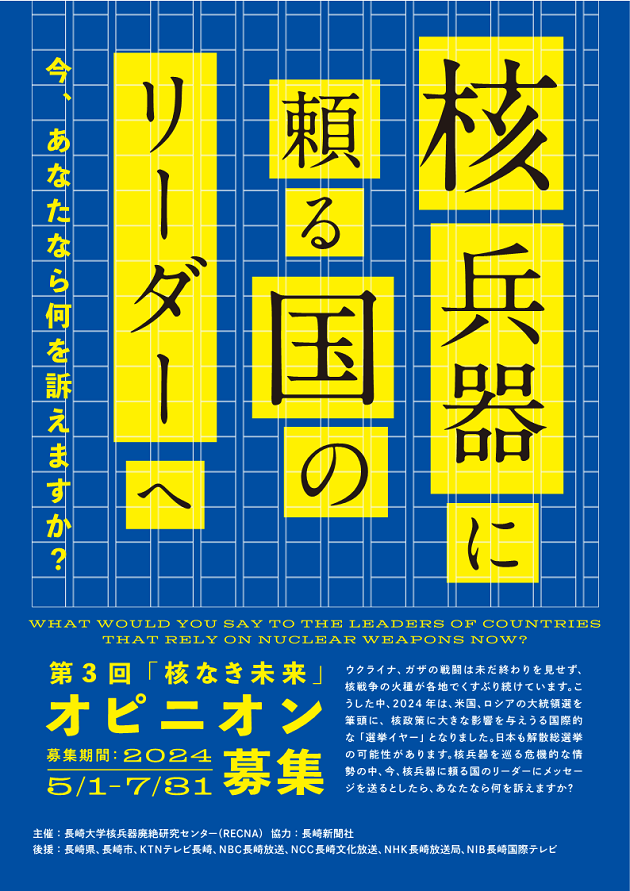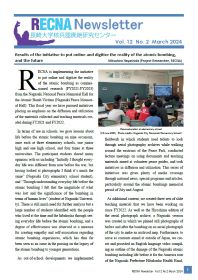Calls for submissions! [JPN]
3rd Essay Contest on a “Nuclear Weapons Free Future”
The Research Center for Nuclear Weapons Abolition, Nagasaki University (RECNA), with the support of the Nagasaki Shimbun, invites youth between the ages of 16 and 29 to submit an essay on a “Nuclear Weapons Free Future.”
The conflicts in Ukraine and Gaza show no signs of abating, and the specter of nuclear war persists in various regions. Against this backdrop, the year 2024 has emerged as an international “election year” with potentially significant implications for nuclear policy. The presidential elections in the United States and Russia are the most prominent, but Japan is also grappling with the prospect of a general election.
If you were to send a letter to a single leader of one nuclear weapons state, or the leaders of several or all of the nuclear weapons states, considering the worsening situation surrounding nuclear weapons, what would you ask them to do? We would like you to compose such a message, that you may address to the leader of one nuclear weapons state, or a state under the nuclear umbrella of a nuclear weapons state, like Japan, or the leaders of all or some of the nuclear weapons states (*1) and umbrella states (*2).
Entries will be divided into two groups: youth aged 16 to 19 (Under 20) and youth aged 20 to 29 (Under 30). Awards will be given to outstanding essays and there will be one grand prize winner for each age group. The two winning essays will be published in the Nagasaki Shimbun newspaper and the winning authors will be invited to participate in the award ceremony in Nagasaki on Saturday, September 21st, 2024. If the winner resides in Japan, she/he will be invited to Nagasaki to participate in person. If the winner resides overseas, he/she will be invited to participate in the award ceremony online.
*1: Russia, United States, China, France, United Kingdom, Pakistan, India, Israel and North Korea
*2: Japan, South Korea, Australia, NATO non-nuclear weapon states (Belgium, Canada, Denmark, Iceland, Italy, Luxembourg, Netherlands, Norway, Portugal, Türkiye, Greece, Germany, Spain, Poland, Czech Republic, Hungary, Estonia, Latvia, Lithuania, Slovakia, Slovenia, Bulgaria, Romania, Albania, Croatia, Montenegro, North Macedonia, Finland, Sweden), and Belarus (Following the invasion of Ukraine, Russia has declared that it is also extending a nuclear umbrella to Belarus, where Russia has deployed nuclear weapons. Consequently, Belarus is now also considered to be included in this category.)
| ELIGIBILITY |
|---|
| • Under-20 (Ages between 16 and 19), Under-30 (Ages between 20 and 29) as of July 31, 2024. |
| • Any residence or nationality is welcome. |
| APPLICATION |
|---|
| Please submit the following documents in PDF format by e-mail to opinion@ml.nagasaki-u.ac.jp |
| 1. Application [form] * For download |
| 2. Your Essay (Essays should be about 1000 words, in English, and must be original and unpublished. Your essay should be in the form of a letter/message to the leader(s) of a “nuclear armed states” or a country under the “nuclear umbrella. Make it clear in the title or in the text which leader(s) the message is addressed to.) |
| SUBMISSION DEADLINE |
|---|
| July 31, 2024 |
| You will receive a notice of receipt approximately one week after submission. If you do not receive a notice please contact us at the contact information below. |
| * Please note that applications will not be accepted at the contact e-mail address. |
| ABOUT THE PRIZE |
|---|
| For Youth Under-30: |
| • The grand prize winner will receive a commemorative plaque, prize money of 50,000 yen, and, for a winner who resides in Japan, an invitation to the award ceremony in Nagasaki. (A winner who resides outside Japan will be invited to participate online.) |
| • The second prize winner will receive a commemorative plaque and prize money of 30,000 yen. |
| For Youth Under-20: |
| • The grand prize winner will receive a commemorative plaque, prize money of 30,000 yen, and, for a winner who resides in Japan, an invitation to the award ceremony in Nagasaki. (A winner who resides outside Japan will be invited to participate online.) |
| • The second prize winner will receive a commemorative plaque and prize money of 10,000 yen. |
| AWARD SELECTION AND ANNOUNCEMENT |
|---|
| Two grand prize winners and two second prize winners will be selected after strict screening by the selection committee. The committee members are: |
| • Yuichi SEIRAI, Akutagawa Award-winning author (Chair) |
| • Gregory KULACKI, Visiting Fellow of RECNA (Chair of the English Review Subcommittee) |
| • Yoshiki YAMADA, Editorial Director, Nagasaki Shimbun newspaper, visiting professor of RECNA (Vice chair) |
| • Keiko NAKAMURA, Associate Professor of RECNA (Vice chair) |
| • Tatsujiro SUZUKI, Professor of RECNA, |
| • Suzuka NAKAMURA, Co-president of KNOW NUKES TOKYO |
| • Sumiko HATAKEYAMA, Co-president of Peace Boat |
| • Ayane MURAKAMI , 9th member of Nagasaki Youth Delegation |
| SCREENING CRITERIA |
|---|
| Your Essay will be evaluated on the following criteria: |
| (1) Clarity and Logical consistency, (2) Factual content, (3) Creativity and originality, (4) Expressiveness |
| ANNOUCEMENT |
|---|
| The results will be announced in the Award Ceremony. |
| Time and Date: Saturday, September 21, 2024, 1-2 p.m. |
| Venue: Nagasaki University (https://www.nagasaki-u.ac.jp/en/) |
| The Grand Prize-winning essays will be published in full in the Nagasaki Shimbun newspaper at a later date. All winning essays will be published on the RECNA website. |
| * The copyright of the submitted essays belongs to entrant, but the organizer (RECNA) holds secondary use (publication online or paper format, etc.) right of the winning essays. |
| Sponsored by: the Research Center for Nuclear Weapons Abolition, Nagasaki University (RECNA) |
| Supported by: Nagasaki Shimbun Newspaper |
| Nominal support organizations: Nagasaki Prefecture, Nagasaki City, NHK (Japan Broadcasting Corporation) Nagasaki, KTN (Television Nagasaki Co.,Ltd.), NBC (Nagasaki Broadcasting Company), NCC(Nagasaki Culture Telecasting Corporation), NIB (Nagasaki International Television Broadcasting, Inc.) |
* This project is funded by a donation for the Research Center for Nuclear Weapons Abolition, Nagasaki University (RECNA).
| Contact |
|---|
| Research Center for Nuclear Weapons Abolition, Nagasaki University (RECNA) TEL: +81-95-819-2164 E-mail: recna_staff@ml.nagasaki-u.ac.jp Website: https://www.recna.nagasaki-u.ac.jp/recna/en-top |
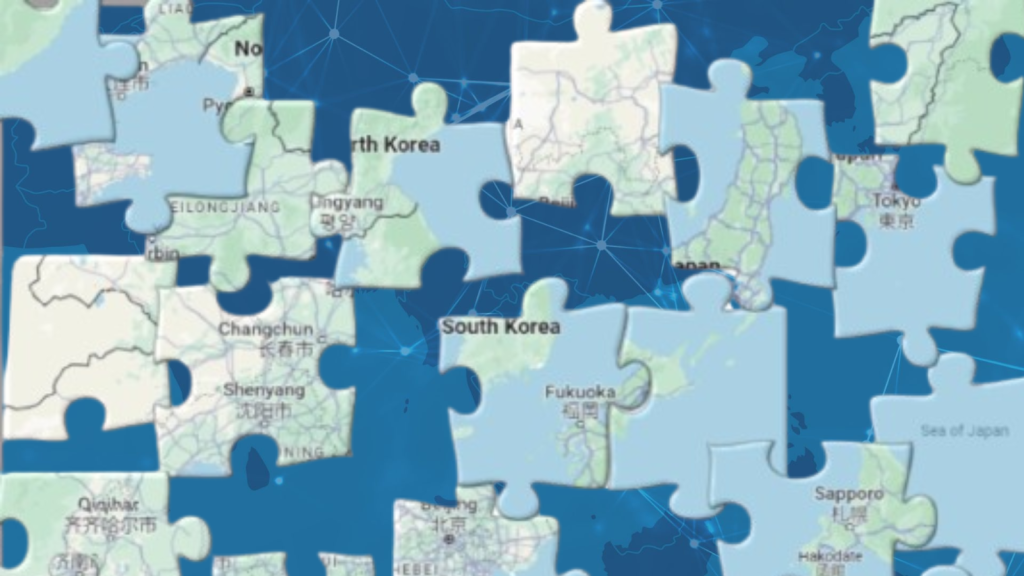
Leon Sigal, Morton Halperin, Peter Hayes,
Chung-in Moon, John Delury, Tom Pickering
April 19, 2024
This report is simultaneously published by the Asia-Pacific Leadership Network, Nautilus Institute, and the Research Center for Nuclear Weapons Abolition, Nagasaki University (RECNA).
Acknowledgements: Funding from John D. and Catherine T. MacArthur Foundation and New Land Foundation.
Overview
|
In this paper we revisit the concept of comprehensive security in Northeast Asia as the guiding principle that should be used to reduce tension, avoid war, and re-engage on a constructive peace-making cooperative security agenda in Northeast Asia, including reducing then eliminating the threat of nuclear war. In section 1, we outline the mostly negative security trends in the region over the last five years. In section 2, we explain how the DPRK’s1 nuclear breakout has become the most urgent threat in the region, but also now demands a more indirect approach at a regional level than in 2018 when we last addressed the issue of comprehensive security.2 In section 3, we explore how inter-Korean relations have spiraled into hostility, rupture, and potentially rapidly escalating conflict and unraveled hard-won channels of communication, cooperation, and collaboration due to how the two Koreas have responded to the evolving external security context and to their respective domestic imperatives. In section 4, we suggest four steps that could ease insecurity in the region, especially in Korea, namely: |
|
|
a) The US and China tacitly act in concert whereby the US tries to restrain Seoul from provocative threats or actions animated at Pyongyang while China seeks to restrain Pyongyang from issuing and acting on threats, especially nuclear threats; b) China reaches out to reassure the ROK3 with concrete steps while the US takes unilateral steps to reassure the DPRK; c) The US engages China to propose a joint statement with all parties on the inadmissibility of use of nuclear weapons and a dialogue on creating a nuclear-weapons-free zone including changes in the nuclear postures of all nuclear-armed states in the region; d) The US and the ROK explicitly outline the benefits to the DPRK of curbing its nuclear arming including improved security, access to advanced information technology, access to space services, and its integration into regional and global institutions with concomitant increased stature. |
|
| In section 5, we conclude that the steps being taken to reinforce deterrence may lead to a downward spiral that leads to rather than deterring war; and that progress in easing tensions in Korea could then inspire cooperative security efforts elsewhere in Northeast Asia to the benefit of all parties in the region while re-establishing the conditions needed for a comprehensive approach to realizing the denuclearization of the Korean peninsula. | |
1 DPRK, the Democratic People’s Republic of Korea, sometimes referred to as “North Korea.” 2 See: Morton Halperin, Peter Hayes, Thomas Pickering, Leon Sigal, “GENERAL ROADMAP AND WORK PLAN FOR NUCLEAR DIPLOMACY WITH NORTH KOREA”, NAPSNet Special Reports, April 10, 2018, https://nautilus.org/napsnet/napsnet-special-reports/general-roadmap-and-work-plan-for-nuclear-diplomacy-with-north-korea/ MORTON HALPERIN, PETER HAYES, THOMAS PICKERING, LEON SIGAL, PHILIP YUN, “FROM ENEMIES TO SECURITY PARTNERS: PATHWAYS TO DENUCLEARIZATION IN KOREA”, NAPSNet Policy Forum, July 06, 2018, https://nautilus.org/napsnet/napsnet-policy-forum/from-enemies-to-security-partners-pathways-to-denuclearization-in-korea/ 3 ROK, the Republic of Korea, sometimes referred to as “South Korea.” |
|
Authors’ Profile:
Full text (PDF) is here.
The views represented herein are the author’s own and do not necessarily reflect the institutional positions.
The page for this project is here.

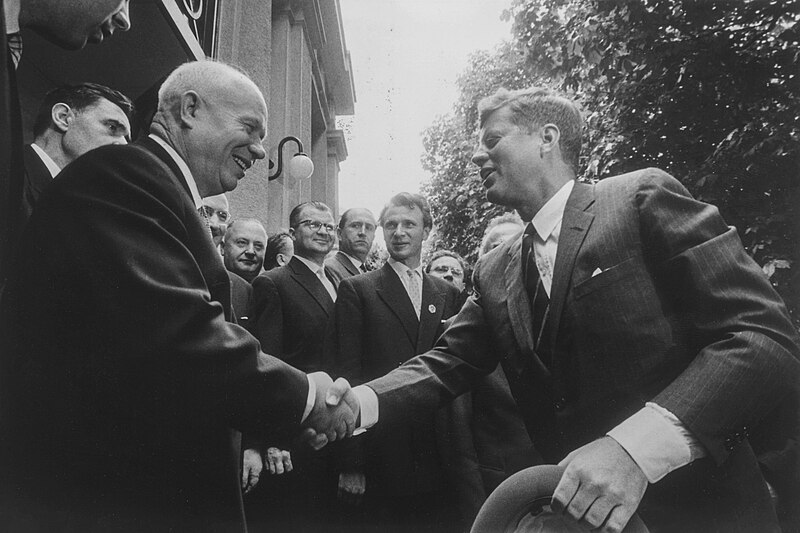
|
|
|
image(left): Wikimedia Commons, US President John F. Kennedy shaking hands with Soviet leader Nikita Khrushchev.
image(right): U.S. DepartmentofDefense, Marine Corps Gen. Joe Dunford, chairman of the Joint Chiefs of Staff, and Gen. Fang Fenghui of the Chinese army, chief of China’s joint staff, sign the joint strategic dialogue mechanism following a roundtable discussion at the Ba Yi, the People’s Liberation Army headquarters in Beijing, Aug. 15, 2017. DoD photo by Navy Petty Officer 1st Class Dominique A. Pineiro.
|
|
Ulrich Kühn and Heather Williams
April 16, 2024
This report is published under a 4.0 International Creative Commons License the terms of which are found here.
This report is simultaneously published by the Asia-Pacific Leadership Network, Nautilus Institute, and the Research Center for Nuclear Weapons Abolition, Nagasaki University (RECNA).
It was first published in the Journal for Peace and Nuclear Disarmament.
Abstract
Keywords: Nuclear weapons; international law; threat of force; nuclear threat
Authors’ Profile:
Heather Williams is the Director of the Project on Nuclear Issues at the Center for Strategic and International Studies. She is also an associate fellow with the Project on Managing the Atom, Harvard Belfer Center.
Full text (PDF) is here.
The page for this project is here.

RECNA Newsletter Vol.12 No.2 (March 31, 2024)
【3rd year】 What Should Be Done? – Practical Policies to Prevent Nuclear Catastrophe (March, 2024)
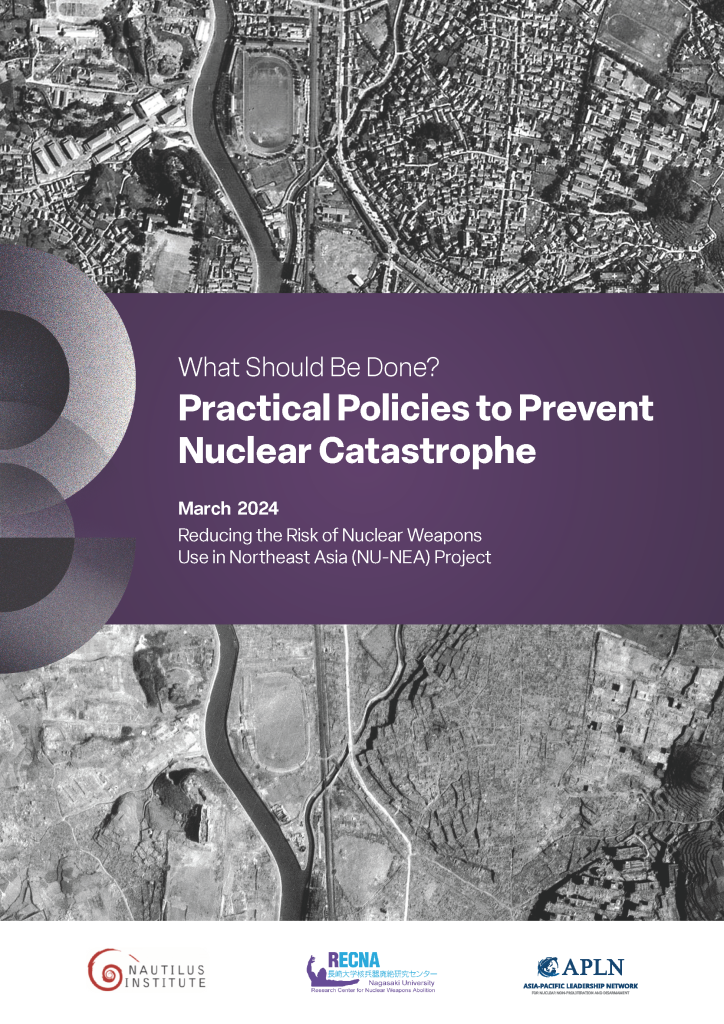 [English・Full-text: PDF]*New version was uploaded (Apr. 15, 2024).
[English・Full-text: PDF]*New version was uploaded (Apr. 15, 2024).
[English Summary: PDF] [Chinese Summary: PDF]
[Korean Summary: PDF] [Russian Summary: PDF ]
*New version was uploaded (Apr. 15, 2024).
The page for this project is here.

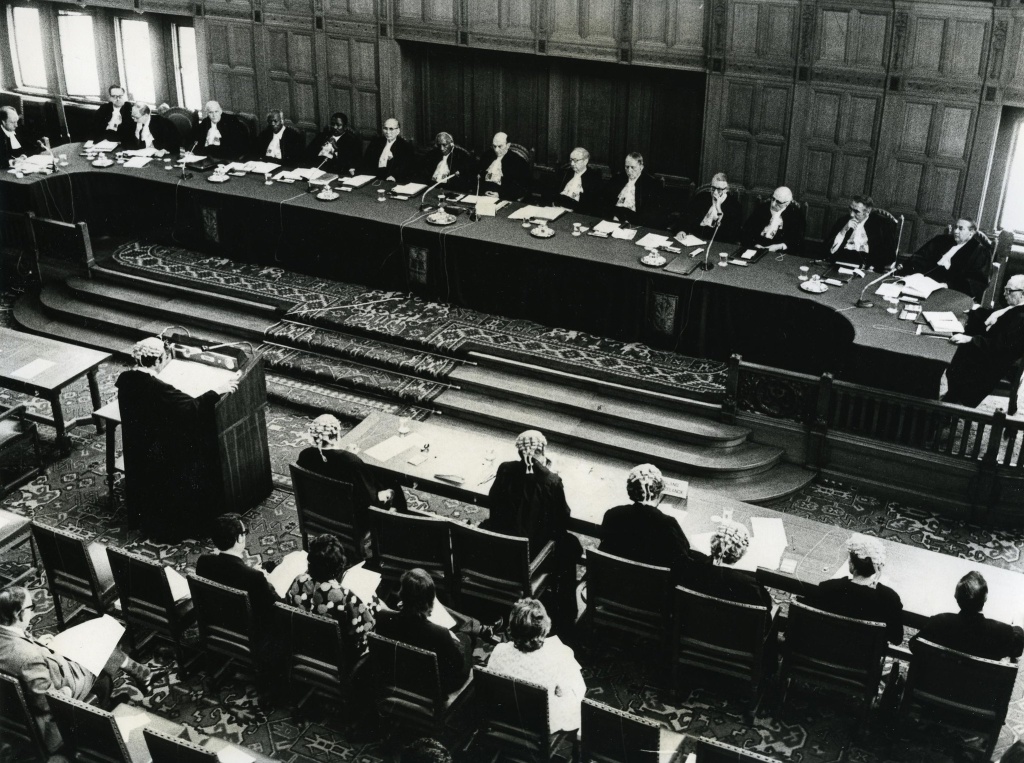
Anna Hood and Monique Cormier
March 8, 2024
This report is published under a 4.0 International Creative Commons License the terms of which are found here.
This report is simultaneously published by the Asia-Pacific Leadership Network, Nautilus Institute, and the Research Center for Nuclear Weapons Abolition, Nagasaki University (RECNA).
It was first published in the Journal for Peace and Nuclear Disarmament.
Abstract
Keywords: Nuclear weapons; international law; threat of force; nuclear threat
Authors’ Profile:
Dr Monique Cormier is a Senior Lecturer in the Monash University Faculty of Law. Her primary research interests include jurisdiction and immunities in international law and legal issues relating to nuclear non-proliferation. Recent publications include The Jurisdiction of the International Criminal Court over Nationals of Non-States Parties (Cambridge University Press, 2020) and ‘Can Australia Join the Nuclear Ban Treaty without Undermining ANZUS?’ (Melbourne University Law Review, 2020, co-authored with Anna Hood).
Full text (PDF) is here.
The page for this project is here.


Anna Hood and Monique Cormier
March 1, 2024
This report is published under a 4.0 International Creative Commons License the terms of which are found here.
This report is simultaneously published by the Asia-Pacific Leadership Network, Nautilus Institute, and the Research Center for Nuclear Weapons Abolition, Nagasaki University (RECNA).
It was first published in the Journal for Peace and Nuclear Disarmament.
The international legal status of threats to use nuclear weapons is uncertain. In this article, we map existing prohibitions against nuclear threats at international law and seek to explain the scope and remit of such laws. To that end, the article explores unilateral negative security assurances; prohibitions on threats to use nuclear weapons in international agreements (including the TPNW, the nuclear weapons free zone treaties and their protocols, and the 1994 Budapest Memorandum); the rules concerning threats in the jus ad bellum regime; and the rules relating to threats in the jus in bello regime. Where there is disagreement about the way these international laws apply to threats to use nuclear weapons, we explain the different views and their significance, and we identify where there are gaps in the existing legal framework. This article is the first in a two-part series on the legality of nuclear threats.
Keywords: Nuclear weapons; international law; threat of force; nuclear threat
Dr Anna Hood is an associate professor at the University of Auckland’s Faculty of Law. Her research focuses primarily on international law and security, and international disarmament law. Within international disarmament law she has particular expertise in, and has published widely on, nuclear weapons law. She is the co-editor, with Dr Treasa Dunworth, of the book Disarmament Law: Reviving the Field (Routledge, 2020) and she has been awarded multiple grants for her work on international disarmament law. In addition to her academic research, Anna provides international law advice to a range of civil society organisations, think tanks and governments.
Dr Monique Cormier is a Senior Lecturer in the Monash University Faculty of Law. Her primary research interests include jurisdiction and immunities in international law and legal issues relating to nuclear non-proliferation. Recent publications include The Jurisdiction of the International Criminal Court over Nationals of Non-States Parties (Cambridge University Press, 2020) and ‘Can Australia Join the Nuclear Ban Treaty without Undermining ANZUS?’ (Melbourne University Law Review, 2020, co-authored with Anna Hood).
Full text (PDF) is here.
The page for this project is here.

RECNA Workshop on Nuclear Disarmament
“Are nuclear weapons obsolete? -Nuclear policy lessons from the Russian war against Ukraine”
Date: March 12 (Tue) 2024, 9:00 am – 11:00 am (JST)
Place: On-Line (Zoom Webinar)
Language: English Only
Speaker: Dr. Pavel Podvig
Since the Russia’s invasion in Ukraine, the role of nuclear weapons in national security and utility of nuclear deterrence have been major subjects of discussion. We are fortunate that Dr. Pavel Podvig, a world leading expert on Russia’s nuclear policy, kindly agreed to give a speech at RECNA, during his visit to Nagasaki on this important issue. This is a great opportunity to learn more about nuclear deterrence and utility of nuclear weapons in national security policy, learning a lesson from the Ukraine conflict. The workshop will be conducted only on-line. We hope it will be useful for those looking of a better understanding of Russia’s nuclear policies and their implications for Northeast Asia.
| Language: | English only |
| Registration: | Please register from here by March 11 (Mon) for all participants. |
| Contact: | RECNA Secretariat TEL: +81-(0)95-819-2164 E-mail: recna_staff@ml.nagasaki-u.ac.jp |
Abstract
The role that nuclear weapons played in shaping the conflict in Ukraine and Russia’s invasion in February 2022 raise important questions about nuclear deterrence and the utility of nuclear weapons as a military and political tool of war. The evidence suggests that this utility is extremely limited. More broadly, nuclear weapons do not provide the states that possess them with tangible national security benefits and the reliance on nuclear weapons ultimately undermines national security.
Profile of Speaker

|
Pavel Podvig |
| Pavel Podvig is an independent analyst based in Geneva, where he runs his research project, “Russian Nuclear Forces.” He is also a Senior Researcher at the UN Institute for Disarmament Research and a researcher with the Program on Science and Global Security at Princeton University. Pavel Podvig started his work on arms control at the Center for Arms Control Studies at the Moscow Institute of Physics and Technology (MIPT), which was the first independent research organization in Russia dedicated to analysis of technical issues of disarmament and nonproliferation. Pavel Podvig led the Center for Arms Control Studies project that produced the book, Russian Strategic Nuclear Forces (MIT Press, 2001). In recognition of his work in Russia, the American Physical Society awarded Podvig the Leo Szilard Lectureship Award of 2008 (with Anatoli Diakov). Pavel Podvig is a member of the International Panel on Fissile Materials. He has a physics degree from MIPT and PhD in political science from the Moscow Institute of World Economy and International Relations. | |
Vol.6, Issue 2 of Journal for Peace and Nuclear Disarmament (J-PAND) is now available online. There are 13 open access articles.
For the issue, see here. It features “Irreversibility in Global Nuclear Politics”. This is the first part of a series of special issues on the subject.
REC-PP-19
Nuclear Weapon in Changing World (November 2023)
Kokoro Nishiyama, Alina Smyslova
The main authors of the RECNA policy papers have been experts with accomplishments in universities, research institutions, and in the field of practice. This time, the two authors are young people who will continue to accumulate achievements in research and in the real world.
Starting with this issue, we will publish RECNA policy papers by the next generation of authors from time to time, though irregularly. This time, all the papers are written in English, but we would like to expand the opportunities to publish papers written in Japanese as well.
The training of the next generation in research related to nuclear disarmament and nonproliferation toward nuclear abolition is an urgent task, and we hope that the new policy of the RECNA Policy Paper will contribute to the quantitative expansion and qualitative improvement of human resources.
★ Citation URI: http://hdl.handle.net/10069/0002000584
★ Full text of REC-PP-19 (PDF) is here.
★ List of RECNA Policy Papers is here.
